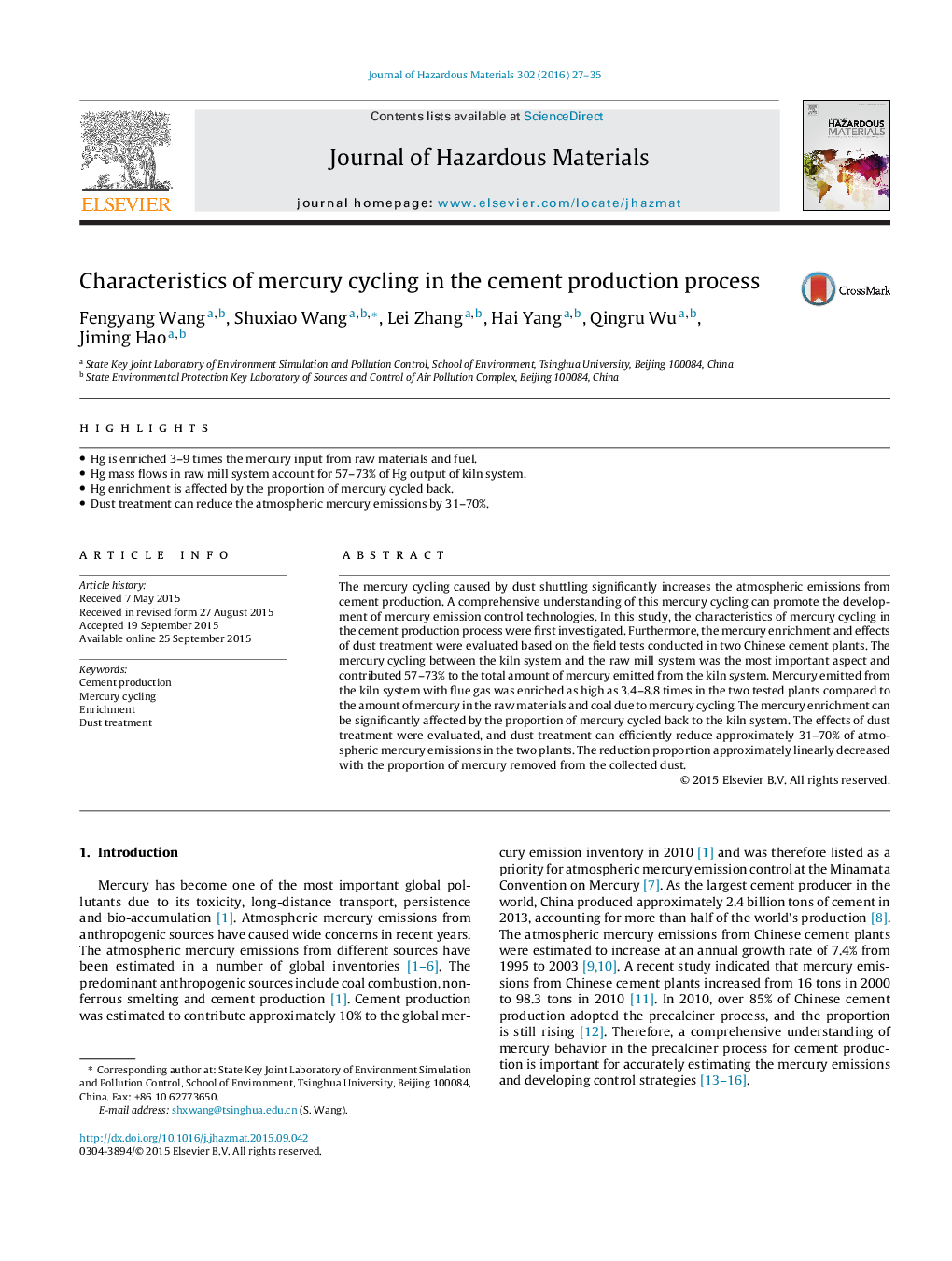| Article ID | Journal | Published Year | Pages | File Type |
|---|---|---|---|---|
| 575591 | Journal of Hazardous Materials | 2016 | 9 Pages |
Abstract
The mercury cycling caused by dust shuttling significantly increases the atmospheric emissions from cement production. A comprehensive understanding of this mercury cycling can promote the development of mercury emission control technologies. In this study, the characteristics of mercury cycling in the cement production process were first investigated. Furthermore, the mercury enrichment and effects of dust treatment were evaluated based on the field tests conducted in two Chinese cement plants. The mercury cycling between the kiln system and the raw mill system was the most important aspect and contributed 57-73% to the total amount of mercury emitted from the kiln system. Mercury emitted from the kiln system with flue gas was enriched as high as 3.4-8.8 times in the two tested plants compared to the amount of mercury in the raw materials and coal due to mercury cycling. The mercury enrichment can be significantly affected by the proportion of mercury cycled back to the kiln system. The effects of dust treatment were evaluated, and dust treatment can efficiently reduce approximately 31-70% of atmospheric mercury emissions in the two plants. The reduction proportion approximately linearly decreased with the proportion of mercury removed from the collected dust.
Related Topics
Physical Sciences and Engineering
Chemical Engineering
Chemical Health and Safety
Authors
Fengyang Wang, Shuxiao Wang, Lei Zhang, Hai Yang, Qingru Wu, Jiming Hao,
